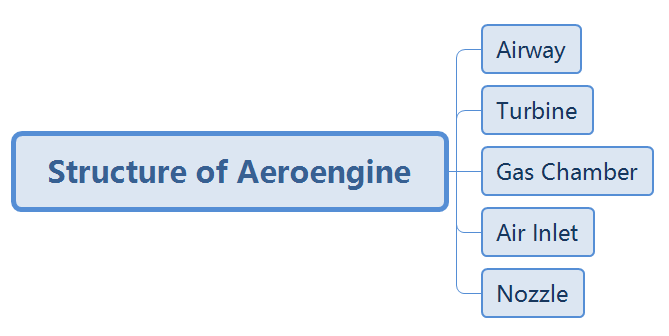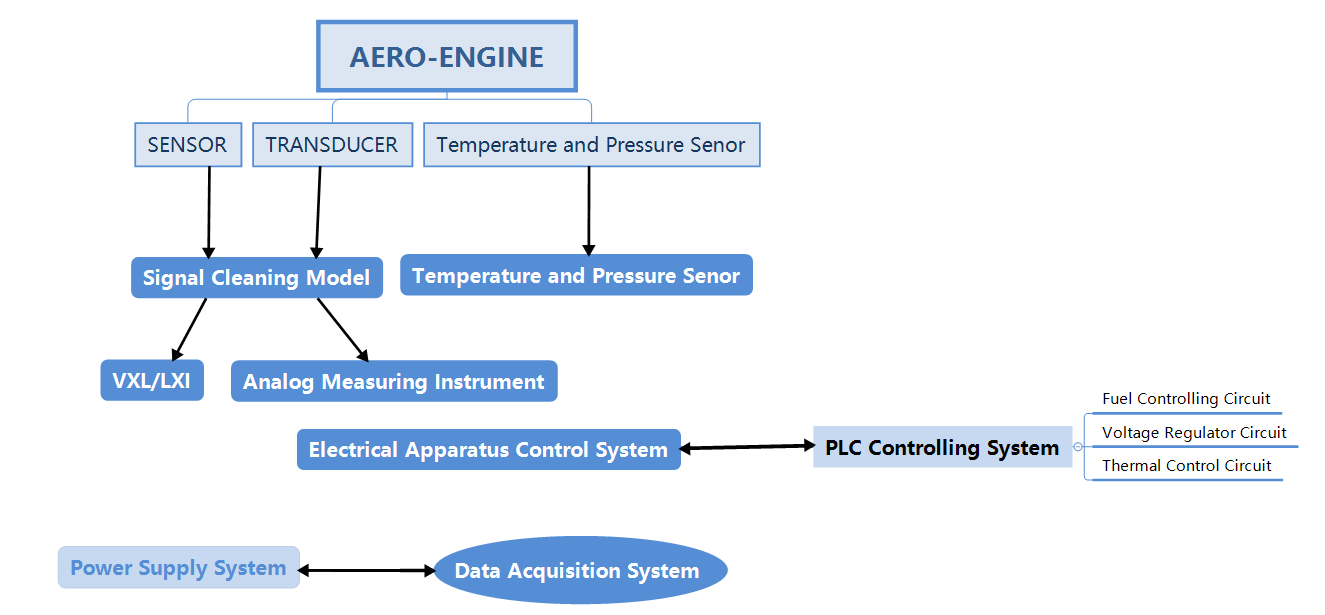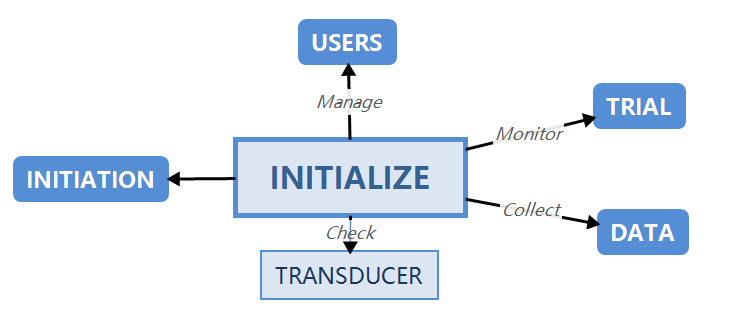1. Introduction
Aeroengine is a highly complex and precise thermal machinery, which provides power for aircraft. At present, aeroengine is still the most important thing for people to research and strive for breakthrough. This paper mainly introduces the basic classification and structure of aeroengines. This paper mainly introduces the development history, structure composition, related technologies and future development direction of aeroengines. The purpose of this paper is to make readers have a more clear and systematic understanding of aeroengines, so as to better understand the relevant content of aeroengines in the future.
2. Development history of Aeroengine
Aeroengine is a highly complex and precise machine, known as the "flower of industry". From the steam engine to the internal combustion engine, then to the jet engine, and then to the output of various types of aeroengines, the aeroengine has experienced many stages of development before it has the present grand occasion [1].
3. Type and structure of Aeroengine
The types of aeroengines mainly include piston engines, gas turbine engines and ramjets, as shown in Figure 1.
|
Figure 1. Type of aeroengine. |
The structure of aeroengine mainly includes compressor, turbine, combustion chamber, inlet and tail nozzle. As shown in Figure 2.
|
Figure 2. Structure of aeroengine. |
4. Testing technology of Aeroengine
4.1. Hardware composition, as shown in Figure 3
|
Figure 3. Hardware composition of test technology(quoted from [2]). |
4.2. Software composition, as shown in Figure 4
|
Figure 4. Test technology soft components(quoted from [2]). |
4.3. Development prospect of aero-engine test technology
At present, the domestic aero-engine has made remarkable progress in the aspects of component information acquisition function, real-time data acquisition capability, new test technology and computer-aided test technology, but there is still a certain gap with western advanced countries, and it still needs to be improved [2]. In the future, it can be developed in computer-aided technology, artificial intelligence technology and testing technology.
5. Control technology of Aeroengine
5.1. Existing problems
Low degree of intelligent automation and low maturity of advanced key technologies
5.2. Development trend
Improve the precision of high-speed cutting, reduce the weight of control system components, popularize adaptive control system and adopt distributed control system.
5.3. Application of control technology
On the track tracking control of rotorcraft, the experimental research shows that the Adaptive Incremental backstepping sliding mode control is superior to the traditional backstepping control and the fixed backstepping sideslip control. Even under the condition of fixed gain, it still has higher robustness and can adapt to a variety of typical rotorcraft models, which is the reason why people choose it [3].
6. Development requirement and Prospect of Aeroengine
6.1. Development in big data
Set up the integration and analysis function of big data system for all dimensional data and establish the engine database of the manufacturer; Manage the data (including the whole machine, parts and components) in the process of engine processing, manufacturing and assembly, so as to improve the level of engine process manufacturing, reduce the dispersion of engine batch production and improve the production quality of engine products; An engine repair database is established to manage the data in the process of engine maintenance and overhaul, so as to find out the change rules of engine life and performance, and solve the bottleneck problems restricting engine development such as large engine performance attenuation [4].
6.2. Energy saving and environmental protection
6.2.1. Noise pollution: for noise, we can use silencers (to reduce the volume) and high bypass ratio turbofan engines (to reduce the engine speed). During flight, we can reduce the flight noise by taking off with reduced thrust.
6.2.2. Air pollution: for gas emission, we can use low pollution fuel chamber, use hydrogen fuel and improve fuel atomization quality [5].
6.3. Material requirements
6.3.1. In order to improve the thrust to weight ratio of aero-engine, we need to develop silicon carbide composites with light weight, high strength and toughness, high temperature resistance, long life, ablation resistance and oxidation resistance. CMC SiC is a new material with the advantages of metal materials, ceramic materials and carbon materials. As a high-temperature thermal structural material, CMC SiC can greatly improve the service temperature and strength. Now it is often used to make engine hot end components, which can improve the combustion conditions and improve the combustion efficiency. At the same time, it can also reduce pollution emissions. It is of great significance for the manufacture of aero-engine. China has made great progress in the production of SiC high fiber materials, but there is still a huge gap between China and developed countries in the construction, verification and material application.
6.3.2. In modern science and technology, the harsh service conditions of high speed and high temperature, long life and high reliability of the engine have increasingly increased the requirements on materials. We should not only put forward requirements on the materials themselves, but also carry out special treatment on the surface of parts, such as plating treatment, infiltration treatment, spraying high-temperature coating treatment, sealing treatment, wear-resistant treatment and other technologies [6].
6.4. Aeroengine efficiency improvement technology
In order to improve the propulsion efficiency of the engine as much as possible, it is necessary to adopt higher mass flow and lower jet speed, that is, the engine is required to have larger radial size and higher bypass ratio. So far, China has made breakthroughs in the following two areas:
6.4.1. A reduction gear box is arranged between the low-pressure turbine and the fan to facilitate the speed balance between the turbine and the fan.
6.4.2. Redesign the turbine without stator. Each group of blades constitutes a first stage turbine, which rotates in reverse with its adjacent stage [7].
7. Possible future development direction
7.1. Conception of variable mode Aeroengine
Overall scheme: Based on the conventional low bypass ratio high thrust turbofan engine, the dual rotor distributed built-in start-up generator and turbine interstage combustion are adopted.
The following key technologies need to be broken through: 1. High energy density built-in distributed start-up power generation integrated machine; 2. Variable mode near constant pressure turbine interstage combustion technology; 3. High power energy storage and integrated flight generator energy management technology; 4. Multi mode aeroengine control technology with high electrification [8].
7.2. Preparation method of wear resistant coating
Wear resistant coatings are divided into anti-collision coatings and adhesion resistant coatings. At present, the most widely used impact resistant coatings in aeroengine include cobalt / carbide coatings, chromium carbide tungsten carbide coatings and nickel chromium chromium carbide coatings. The preparation methods mainly include plasma spraying and supersonic flame spraying, while the most widely used adhesion resistant coatings are nickel chromium borosilicate coatings, It can be prepared by plasma spraying [9].
7.3. Enlightenment of intelligent manufacturing technology on Aeroengine Design
The intelligent manufacturing mode has completely subverted people's traditional understanding of aero engines. Its powerful digitization and intellectualization have greatly accelerated the development of the aviation manufacturing industry [10]. Foreign countries have achieved excellent management throughout the whole life cycle of products with the help of advanced product technologies. We should learn advanced technologies and break through our own technological bottlenecks. To realize intelligent manufacturing in China, on the one hand, we should improve our own technology, and on the other hand, we should build and design infrastructure that conforms to the cycle development.
7.4. Prospect of hydrogen fuel used in air transportation
Advantages: the use of hydrogen fuel will not emit pollutants and will effectively improve the greenhouse effect; It can effectively reduce the total fuel weight and fuel consumption and reduce the load pressure [11].
Prospect: the application of hydrogen fuel aircraft is not entirely in the technical modification of aero-engine and aircraft body, but mainly in the production, supply, storage and transportation of hydrogen fuel. In particular, the technology for extracting hydrogen is not mature at present, but the safety of hydrogen fuel is similar to that of traditional fuel.
8. Conclusion
The research and development environment of aero-engine is harsh, and the research and development requirements are fine and demanding. At the same time, the requirements for research and development personnel are high, and the design needs to be interdisciplinary.
We should pay more attention to aero-engine testing technology in the future.
We will "accelerate the independent R & D, manufacturing and production of aero engines and gas turbines, and make unremitting efforts to build China into an aviation power", constantly improve our independent innovation ability, and realize the transformation from an aviation power country to an aviation power country [12].
References
[1]. Wang Qiang, Zheng riheng, Chen Maozhang Development and innovation of aeroengine science and technology [J]Science and technology guide, 2021,39 (03): 59-70.
[2]. Liu Xingsong, Wang kundong, Gong ZheResearch progress of aeroengine and test technology [J]Automation and instrumentation Table, 2022, (01): 1-6.
[3]. Su Hongxiang, Xu Xingchao, Li WenhaoAnalysis on development trend of aeroengine control [J]Times agricultural machinery, 2020,47 (01): 62-64.
[4]. Li Dawei, Wang Jun, Wang Chen, Wang JiatongApplication exploration of big data technology in aero-engine R & D [J]Aero engine, 2021,47 (02): 33-37.
[5]. Worcester. Study on environmental pollution phenomenon of aeroengine and its solutions [J]Energy and energy conservation, 2021, (01): 80-82.
[6]. Liu Qiaomu, Huang shunzhou, he AijieApplication demands and challenges of silicon carbide ceramic matrix composites in aero engines [J]Materials engineering, 2019, 47 (2): 1-10.
[7]. Worcester. Research and Prospect of aero engine efficiency improvement technology [J]Energy saving, 2019,38 (07): 164-166.
[8]. Lv Dong, Wang Nan, Kong Xingao, Xu Xue, Su GuiyingConcept of variable mode aeroengine for future directed energy weapons [a]China Association for science and technology aero - engine production and Research ConsortiumThe 6th Aerospace Power Joint Conference and the 42nd technology exchange conference of China Aerospace third professional information network and the 2021 high level Forum on aero engine technology development (Volume 1) [C]China Association for science and technology aero engine industry and University Consortium: China Aerospace third professional information network, 2022:44-50.
[9]. Shu Qin, he Jianhong, Han Jianxing, Ding Jin, Li Jincheng, Xiong YongStudy on preparation method and performance of wear resistant coating for thermal spraying aeroengine [J]China Metal Bulletin, 2020, (09): 91-92.
[10]. Su Qiaoling.The development of intelligent manufacturing at home and abroad and Its Enlightenment to the development of commercial aero engines in China [J]Aviation manufacturing technology, 2017, (18): 54-61.
[11]. Worcester. Prospect of hydrogen fuel used in air transportation [J]Energy saving, 2020,39 (11): 49-51.
[12]. Liu Daxiang. Strive to write a new chapter of aviation power development in the new era [J]Science and technology guide, 2019,37 (05): 1.
Cite this article
Yao,F. (2023). Brief Analysis of Aeroengine. Theoretical and Natural Science,5,288-293.
Data availability
The datasets used and/or analyzed during the current study will be available from the authors upon reasonable request.
Disclaimer/Publisher's Note
The statements, opinions and data contained in all publications are solely those of the individual author(s) and contributor(s) and not of EWA Publishing and/or the editor(s). EWA Publishing and/or the editor(s) disclaim responsibility for any injury to people or property resulting from any ideas, methods, instructions or products referred to in the content.
About volume
Volume title: Proceedings of the 2nd International Conference on Computing Innovation and Applied Physics (CONF-CIAP 2023)
© 2024 by the author(s). Licensee EWA Publishing, Oxford, UK. This article is an open access article distributed under the terms and
conditions of the Creative Commons Attribution (CC BY) license. Authors who
publish this series agree to the following terms:
1. Authors retain copyright and grant the series right of first publication with the work simultaneously licensed under a Creative Commons
Attribution License that allows others to share the work with an acknowledgment of the work's authorship and initial publication in this
series.
2. Authors are able to enter into separate, additional contractual arrangements for the non-exclusive distribution of the series's published
version of the work (e.g., post it to an institutional repository or publish it in a book), with an acknowledgment of its initial
publication in this series.
3. Authors are permitted and encouraged to post their work online (e.g., in institutional repositories or on their website) prior to and
during the submission process, as it can lead to productive exchanges, as well as earlier and greater citation of published work (See
Open access policy for details).
References
[1]. Wang Qiang, Zheng riheng, Chen Maozhang Development and innovation of aeroengine science and technology [J]Science and technology guide, 2021,39 (03): 59-70.
[2]. Liu Xingsong, Wang kundong, Gong ZheResearch progress of aeroengine and test technology [J]Automation and instrumentation Table, 2022, (01): 1-6.
[3]. Su Hongxiang, Xu Xingchao, Li WenhaoAnalysis on development trend of aeroengine control [J]Times agricultural machinery, 2020,47 (01): 62-64.
[4]. Li Dawei, Wang Jun, Wang Chen, Wang JiatongApplication exploration of big data technology in aero-engine R & D [J]Aero engine, 2021,47 (02): 33-37.
[5]. Worcester. Study on environmental pollution phenomenon of aeroengine and its solutions [J]Energy and energy conservation, 2021, (01): 80-82.
[6]. Liu Qiaomu, Huang shunzhou, he AijieApplication demands and challenges of silicon carbide ceramic matrix composites in aero engines [J]Materials engineering, 2019, 47 (2): 1-10.
[7]. Worcester. Research and Prospect of aero engine efficiency improvement technology [J]Energy saving, 2019,38 (07): 164-166.
[8]. Lv Dong, Wang Nan, Kong Xingao, Xu Xue, Su GuiyingConcept of variable mode aeroengine for future directed energy weapons [a]China Association for science and technology aero - engine production and Research ConsortiumThe 6th Aerospace Power Joint Conference and the 42nd technology exchange conference of China Aerospace third professional information network and the 2021 high level Forum on aero engine technology development (Volume 1) [C]China Association for science and technology aero engine industry and University Consortium: China Aerospace third professional information network, 2022:44-50.
[9]. Shu Qin, he Jianhong, Han Jianxing, Ding Jin, Li Jincheng, Xiong YongStudy on preparation method and performance of wear resistant coating for thermal spraying aeroengine [J]China Metal Bulletin, 2020, (09): 91-92.
[10]. Su Qiaoling.The development of intelligent manufacturing at home and abroad and Its Enlightenment to the development of commercial aero engines in China [J]Aviation manufacturing technology, 2017, (18): 54-61.
[11]. Worcester. Prospect of hydrogen fuel used in air transportation [J]Energy saving, 2020,39 (11): 49-51.
[12]. Liu Daxiang. Strive to write a new chapter of aviation power development in the new era [J]Science and technology guide, 2019,37 (05): 1.













